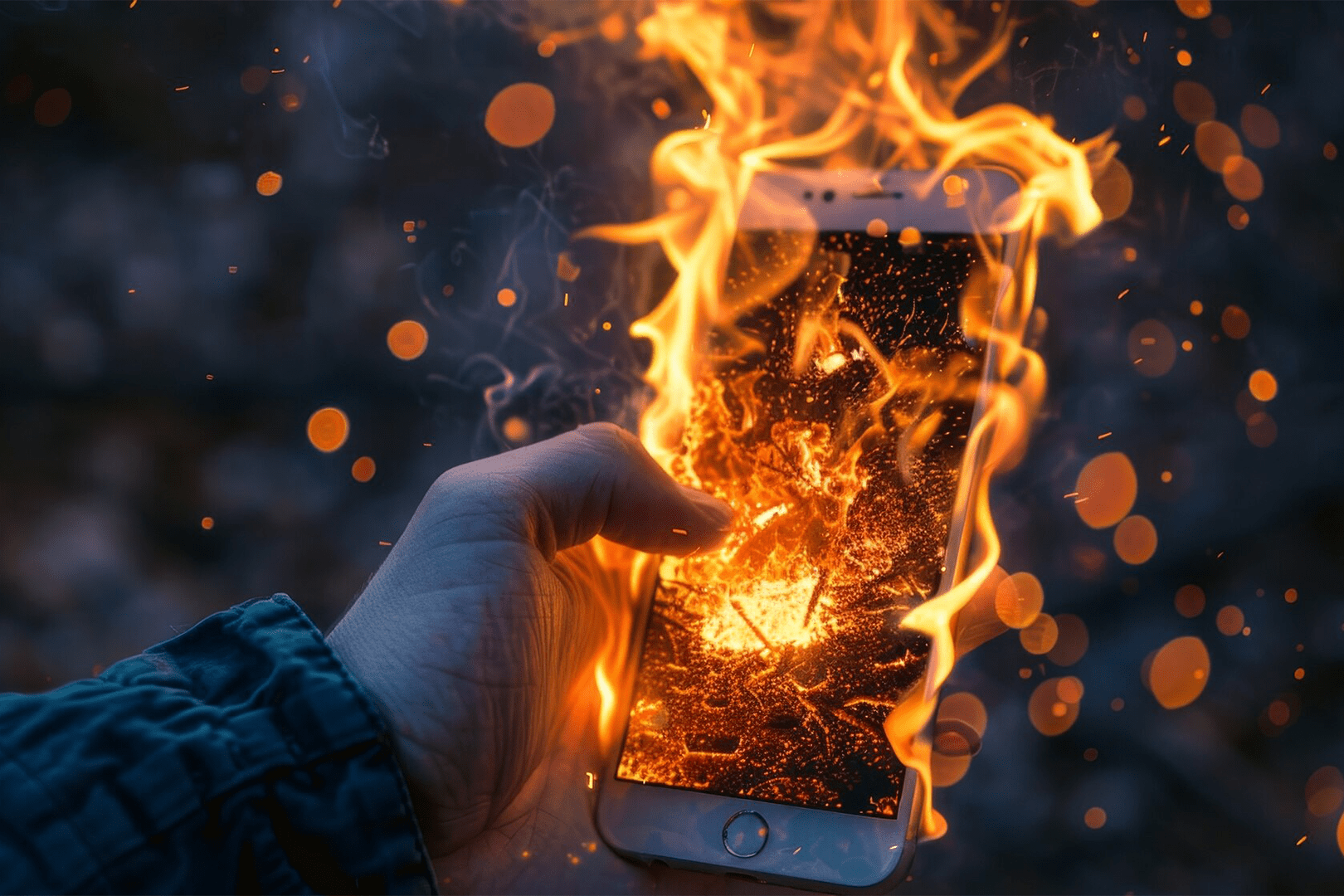With their seamless integration into every part of our life, mobile phones have become essential tools in today's fast-paced world. These gadgets are constantly by our sides, helping us with everything from keeping in touch with loved ones to handling work and leisure. But because of this frequent use, overheating has emerged as a typical problem that can seriously reduce longevity and performance.
At GoFix, we understand the frustration and inconvenience that an overheating phone can cause. That's why we've compiled this comprehensive guide to help you understand the causes of overheating and provide practical tips to keep your device cool, and stop your mobile phone from overheating, and functioning optimally. Whether you're experiencing frequent overheating or want to prevent it from happening in the first place, our expert advice will help you maintain your phone's health and efficiency.
Discover the best practices to stop your mobile phone from overheating and ensure it stays in peak condition with the help of GoFix. Let's dive into the solutions that can make a real difference in your device's performance.
Understanding the Causes of Mobile Phone Overheating
There are several factors that can contribute to mobile phone overheating. Excessive use of processor-intensive programs or activities, such gaming or streaming videos, is one of the main culprits. The phone's processor is overworked as a result of these activities, which increases heat production.
Inadequate ventilation is another frequent cause. Your phone's heat cannot properly dissipate if its airflow is hindered, as it is when it is covered with a case or placed on a soft surface. This can cause overheating.
Overheating might also be caused by battery problems. The phone may overheat when charging or draining due to an improperly functioning or deteriorated battery. Aside from that, overheating can also be caused by using non-branded chargers or charging a phone in extremely hot or cold conditions.
Overheating can also result from software-related issues, such as using out-of-date or incompatible operating systems. For optimum performance, temperature control, and to stop your mobile phone from overheating, it's critical to update the software on your phone on a regular basis.
Optimising Device Settings to Prevent Overheating
There are several settings you can adjust on your mobile phone to stop overheating. First, consider reducing the screen brightness to a level that is comfortable for you but not excessively high. High screen brightness can contribute to heat generation.
Next, disable any unnecessary background processes or apps that may be running in the background. These processes consume system resources and can contribute to overheating. Additionally, consider disabling features such as Bluetooth, GPS, or Wi-Fi when not in use, as they can also generate heat.
Managing app usage is another effective way to stop your mobile phone from overheating. Avoid using processor-intensive apps for extended periods of time, especially in hot environments. Close any unused apps running in the background to reduce the load on the processor and minimise heat generation.
Lastly, consider enabling power-saving modes or battery optimization features on your phone. These modes can help regulate temperature by reducing performance and limiting power consumption ultimately stopping your mobile phone from overheating.
Avoiding Direct Sunlight and Extreme Temperatures
Exposure to direct sunlight or extreme temperatures can significantly impact the temperature of your mobile phone. It is important to avoid leaving your phone in direct sunlight, especially for extended periods of time. The heat from the sun can quickly raise the temperature of your device and potentially lead to overheating.
Similarly, extreme temperatures, both hot and cold, can affect the performance of your phone and contribute to overheating. Avoid exposing your phone to extreme temperature conditions, such as leaving it in a hot car or using it in freezing temperatures. If your phone feels excessively hot or cold to the touch, it is best to bring it back to a moderate temperature before using it.
Additionally, avoid placing your phone near heat sources, such as radiators or heating vents, as this can also contribute to overheating.
Using Accessories to Help Regulate Temperature
Certain accessories can help regulate the temperature of your mobile phone and stop your mobile phone from overheating. Consider using a phone case that is designed for heat dissipation. These cases usually have special materials or designs that allow for better airflow and heat transfer, keeping your phone cool.
Another useful accessory is a cooling pad or external fan. These accessories attach to your phone and provide additional airflow to dissipate heat and stop your mobile phone from overheating. They can be particularly helpful when using your phone for processor-intensive tasks or in hot environments.
Finally, if you frequently use your phone for gaming or other intensive tasks, consider investing in a mobile phone cooling system. These systems are designed to actively cool your phone during usage, preventing overheating and ensuring optimal performance.
Knowing When to Seek Professional Help
In some cases, despite taking preventive measures, your mobile phone may still experience overheating issues. If you notice that your phone constantly overheats or becomes excessively hot to the touch, it may be a sign of an underlying hardware or software problem.
In such situations, it is advisable to seek professional help. At GoFix, our experts are equipped to diagnose and fix these issues efficiently. We can identify any faulty components, clean the internals of your phone, or provide software solutions to address the overheating problem to stop your mobile phone from overheating. Don’t let an overheating phone disrupt your day-to-day activities—visit GoFix for reliable and swift phone repair solutions to keep your device running smoothly.
Remember, addressing overheating issues promptly can help extend the lifespan of your phone and prevent further damage.



